If you’re choosing a new vehicle you either have a big budget, or you don’t - that’s just part of life. But that doesn’t mean it should stop you from being able to get out there and see the world, and what better way to do that than with a caravan in tow?
Keeping that in mind, we decided to put two of the more affordable vehicles that are adept at towing up against one another, in the hope of proving you don’t need to break the bank to get a capable and comfortable caravan-towing tourer.

Our two contenders are the Holden Trailblazer LTZ and the Isuzu MU-X LS-U - both in four-wheel drive, seven-seat guise, and both very close to one another on price.
We charted a test route centred around our caravan pickup point at Jayco Nowra, and the drive route included highway, winding hilly country roads, and some urban testing, too, with the aim of keeping up with traffic (and abiding by the speed limit).
There were a few surprises along the way, but we came away convinced as to which we’d choose to hit the open road and live out that great Aussie dream of a cross-country road trip. Read on to find out which one was our winner.
Value
These two models are very close to one another in terms of how much they cost.
The more affordable of the two is the Holden Trailblazer LTZ 4x4, which has a list price of $52,490 plus on-road costs.
The Isuzu MU-X LS-U 4x4 is a full $110 more, based on list pricing, with a $52,600 sticker price.
There are marked differences when you compare the standard equipment offered across these two vehicles. To make it easier for you to see just how much value is packed into the Holden’s body, here’s a table of standard spec.
Holden Trailblazer LTZ 4x4 | Isuzu MU-X LS-U 4x4 | |
| LED headlights | No | Yes |
| LED daytime running lights | Yes | Yes |
| LED tail-lights | Yes | Yes |
| Auto headlights | Yes | No |
| Auto wipers | Yes | No |
| Fog lights | Yes | Yes |
| Heated side mirrors | Yes | No |
| Folding side mirrors | Yes | No |
| Alloy wheels | 18-inch alloy | 18-inch alloy |
| Tyres | Bridgestone Dueler H/T | Bridgestone Dueler H/T |
| Tyre pressure monitoring | Yes | No |
| Mudflaps | Yes | No |
| Seat trim | Leather appointed | Cloth |
| Heated front seats | Yes | No |
| Electric front seat adjustment | Yes | No |
| Climate control | Dual zone | Single zone |
| Auto-dimming rearview mirror | Yes | No |
| Digital speedometer | Yes | No |
| Media screen | 8.0-inch | 8.0-inch |
| Apple CarPlay/Android Auto | Yes | No |
| Sat nav | Yes | Yes |
| Sound system speakers | 7 | 8 |
| Bluetooth phone and audio | Yes | Yes |
| USB count | 1 (front only) | 2 (front for media, rear for charging) |
You can see that the Holden smashes the Isuzu for standard gear, like-for-like. However, there’s a big caveat when it comes to pricing.
The Isuzu has the added advantage of being available at a considerably more affordable price point in two-wheel drive. You could save about $7000 by choosing a 2WD MU-X over a 4WD version. It would potentially be perfectly suitable for the majority of people out there who might want to hit the open road, but not head off it.
As for safety gear? See the section below for all the details.
Safety
The safety equipment on offer in these two models is not terrific for the segment, with rivals such as the Ford Everest and Mitsubishi Pajero Sport bettering these two by a decent margin.
But, when it comes to which is better equipped on the safety front, it’s the Holden that again comes out on top.
Holden Trailblazer LTZ 4x4 | Isuzu MU-X LS-U 4x4 | |
Auto emergency braking (AEB) | No | No |
Forward collision alert | Yes | No |
Blind spot monitoring | Yes | Optional - $955 |
Rear cross traffic alert | Yes | No |
Lane departure warning | Yes | No |
Lane keep assist | No | No |
ESC | Yes | Yes |
Reversing camera | Yes | Yes |
Rear parking sensors | Yes | Yes |
Front parking sensors | Yes | Optional - $545 |
Airbags | 7 | 6 |
Both have the maximum five-star ANCAP safety rating - but there’s a caveat. The Isuzu's original crash test was conducted in 2013 (though the score applies to “April 2017-onwards” models), while the Holden’s score was awarded in 2016.
Both have ISOFIX child seat anchor points in the outboard seats of the second row, and three top tether points, too. There are no child-seat anchors for the third-row seats in either model.
Engine and transmission
Both are diesel-powered, and both have six-speed automatic transmissions fitted as standard in the specs we have here.
The Holden has a smaller capacity 2.8-litre turbo-diesel four-cylinder engine, but it has considerably more power and torque than the Isuzu. Its maximum power output is 147kW at 3600rpm, but more importantly its peak torque is strong, at 500Nm (at 2000rpm).

The Isuzu’s bigger-capacity 3.0-litre turbo-diesel four-cylinder engine is more relaxed with its outputs, offering up 130kW of power at 3600rpm, and 430Nm of torque (from 2000-2200rpm).

Do the maths and you’ll realise the Holden has a 13 per cent power advantage, and a 16 per cent advantage for torque.
Fuel consumption
You might be wondering what the fuel use differences were on test. Of course, we measured it - but we didn’t just compare the two while towing; we also tested them over an identical loop without the caravan, so we had a control figure.
The towing loop saw surprisingly high fuel use figures for both. Take a second to read through the differences in the table below - but keep in mind, your mileage may vary!
We drove these vehicles to keep up with the speed limit, but you might take it a bit easier, which could greatly impact your real world fuel use.
Holden Trailblazer LTZ 4x4 | Isuzu MU-X LS-U 4x4 | |
Official combined cycle claimed fuel use | 8.6L/100km | 7.9L/100km |
Displayed fuel use on trip computer - normal driving | 8.3L/100km | 8.3L/100km |
Actual fuel use - normal driving | 10.4L/100km | 10.9L/100km |
Displayed fuel use on trip computer - towing | 17.1L/100km | 17.5L/100km |
Actual fuel use - towing | 20.7L/100km | 25.0L/100km |
We were expecting high-teens figured for both, but the consumption we saw was well above that. Just consider this - if you plan to tow something this large, you could well see similar consumption. We tested with just two occupants and no luggage or additions aboard the vehicle or ‘van.
And also, let’s just do the maths a little bit. If the Isuzu consistently used about that much more per 100 kilometres, at a fuel cost of $1.51 per litre, you will spend $6.09 more than if you did it in the Holden.
Think about that for a sec. If you drove the 1604km direct from Adelaide to Uluru - which is a common drive for caravanners - you’d spend $64.64 extra on fuel. That’ll add up if you end up doing a lot of towing.
Look, real-world longer-term conditions could change the outcome (our Isuzu was also quite new without many kilometres on the clock). But if you’re looking to buy a budget tow vehicle, maybe consider a smaller, lighter ‘van, too. The details on our tow tester are below.
Towing Specs
There’s very little between these two models in terms of towing specs - as you can see, the Holden will allow you just a little bit of extra payload despite being heavier overall, thanks to its greater allowable maximum vehicle mass.

Both models have integrated RedArc electric brake controllers fitted, and we had got our trusty trailer mirrors teed up so we could see everything that was going on behind us.
Holden Trailblazer LTZ 4x4 | Isuzu MU-X LS-U 4x4 | |
Gross vehicle mass (GVM) | 2820kg | 2750kg |
Kerb weight | 2203kg | 2142kg |
Payload | 617kg | 608kg |
Gross combination mass (GCM) | 5700kg | 5750kg |
Towing capacity (un-braked) | 750kg | 750kg |
Towing capacity (braked) | 3000kg | 3000kg |
Towball down-load limit | 300kg | 300kg |
Taking all that into account, the specs allowed us a near-three-tonne trailer plus the vehicle’s kerb weight - and whatever is left is all we had to play with. For our test it was myself and CarsGuide Adventure editor Marcus Craft on board, without any luggage or extra bodies.

What was clear, though, is that with such a limited remaining payload available, customers should keep in mind the limits that they have to work with before considering loading up all seven seats with a van of this size in tow.
Towing Review
For this comparison, our mates at Jayco Nowra allowed us to borrow a 2019 Jayco Journey Outback caravan (model designation 21.66-3). It has a travel length of 8315mm, a tare (empty) weight of 2600kg, and imposes 190kg on the towball.
The price for one of these leisure-friendly caravans is generally $67,490 - but you can personalise it with extras and add-ons, if you so choose.
It proved a commendable companion for this test, and pushed our vehicles almost to the limit of their towing capacity.
But the way each of these two vehicles dealt with the load was remarkably different, given the fact that they’re essentially twins under the skin, and roll down the same production line in Thailand.
Both have a ladder frame chassis with independent front suspension and multi-link coil rear suspension, unlike the utes they’re based upon which both run leaf-spring rears (and both have even higher towing capacity as a result).
The Isuzu was a relaxed, enjoyable drive. I was surprised just how at ease it felt, given the weight on the back, and the relative lack of torque compared to its rival here.
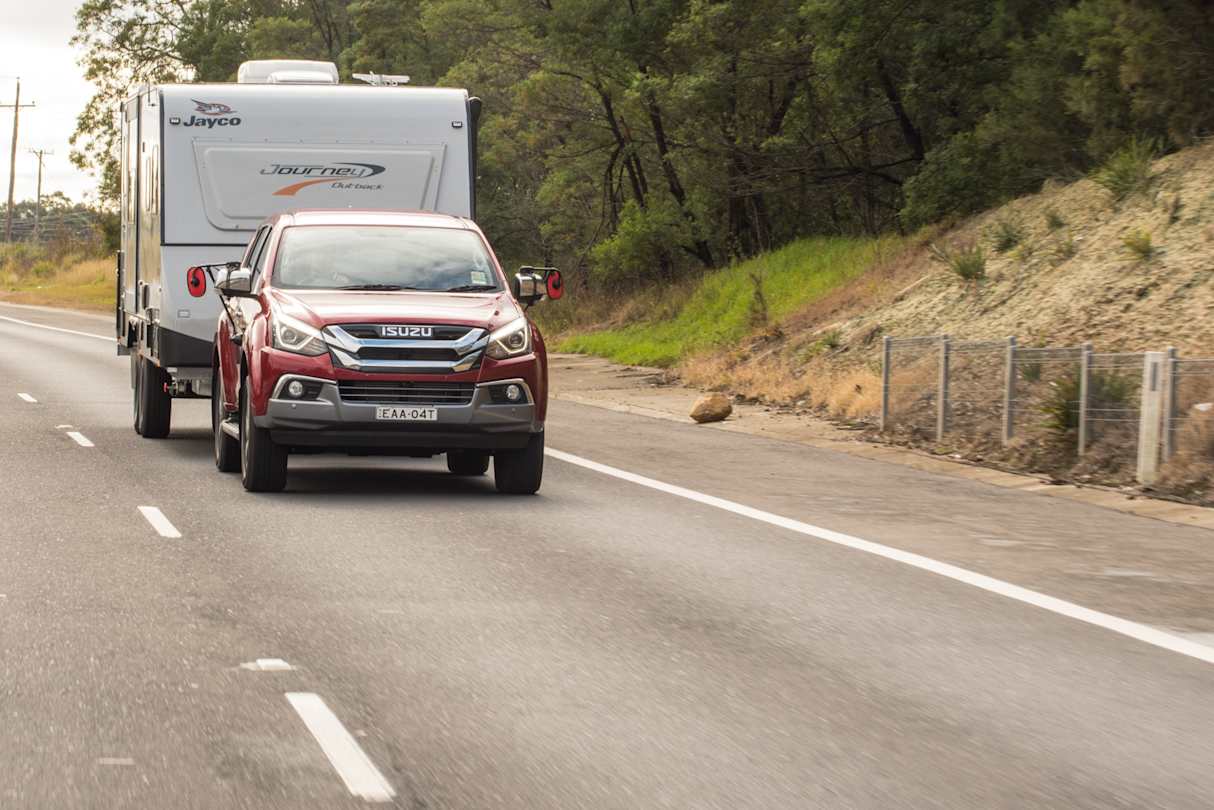
Its suspension was softer and more compliant generally, with a more relaxed feeling for the driver and occupants as a result. There was some pitching nose-to-tail over bigger bumps, but it dealt really well with smaller inconsistencies in the road surface, including minor potholes.
And its steering - while dull and heavy in normal driving - is really nicely considered and easy to use when towing, with good weighting and consistency, and good feel on-centre.
The engine was perhaps the biggest letdown overall - not just because of the high fuel use, but also because it is annoyingly loud. That has a bit to do with the transmission, because it will hang on to gears for a bit longer than the Holden will. It doesn’t offer the same smarts in terms of gradient braking that you’ll find in the Holden, either, but the brakes
The engine noise is the biggest concern, though, and the levels of noise insulation from the road surface and wind are impressive for a vehicle of this shape and size.
The Holden was less enjoyable overall - in fact, it was pretty fatiguing to drive with this much in tow.

That’s mainly down to the chassis, which offered up a ride that was surprisingly unsettled on surfaces that were as close to perfect for country roads in NSW as you can get. The suspension is firm and constantly busy, never allowing the driver or occupants to relax - which is a problem if you plan to hit the open road for months on end. And over our short off road course the Holden's brittle suspension made for slower going, too.
The steering, too, was harder to judge overall. There’s a deadness on-centre, which makes it a bit difficult to position the car in its lane. It is decent to drive overall, and the response you get through corners is good, but it simply isn’t as trustworthy to steer - at low speeds or highway pace - as the Isuzu.
The engine and transmission was definitely more effortless - the pulling power was eager in its delivery, though the gearbox was easier to catch out. It was more keen to shift up a gear on our long hill climb section, which in turn meant that it would need to shift back as things got steeper. That busy nature to the transmission can be wearing over time.
The engine wasn’t as loud as the Isuzu, but there was more road noise and wind noise noticeable in the Holden.
Ownership
The Isuzu comes with a six-year/150,000km warranty plan, which includes the same duration of cover for roadside assist.
The Holden is sold with a five-year/unlimited km warranty, and five years’ roadside assist as well - provided you service your vehicle at a Holden dealership.
In terms of servicing, the Trailblazer requires maintenance every 12 months or 12,000km, with seven years of capped-price cover available. The average cost per service works out at about $433.
The MU-X also has seven years of capped-price maintenance, but with intervals set at 12 months/15,000km. Surprisingly, the average maintenance cost is a fair bit higher, working out at $514 per service over the duration of the period (the 90,000km service is a kicker, at $1110).
Verdict
On paper, the Holden Trailblazer LTZ makes a lot of sense if you’re after a value-laden tow truck with decent safety levels and a strong engine, this could be a great option for you.
Sadly, though, those elements aren’t enough to overcome the tiresome towing experience that we experienced. Yes it was better on fuel, but it wasn’t as good a tow vehicle - all things considered - with this much weight behind it, and we simply couldn’t award it the win as a result. Perhaps a lighter van would help reconcile some of those issues, but that’s not what this test was about.

The Isuzu MU-X LS-U was the more competent and comfortable tow vehicle of these two. It was well sorted in terms of its suspension and steering, and while the engine could do with a little more push and a little less fuel use.
If I was asked to drive one of these two across the country today, with this caravan in tow, it would be an easy choice - the Isuzu - even though it misses out on a fair bit of the gear that you get in the Holden.
But we set out to find which of these two was the best tow vehicle, and the answer to that question is the Isuzu MU-X LS-U.





.jpg)










































.jpg)
.jpg)
.jpg)
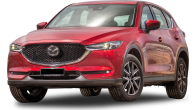





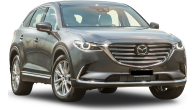
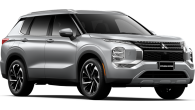



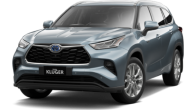



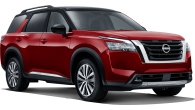

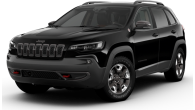






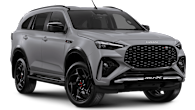



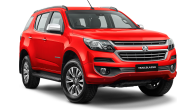






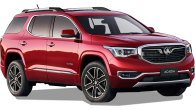
.png)

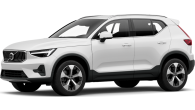


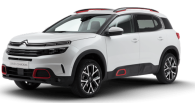



.png)






